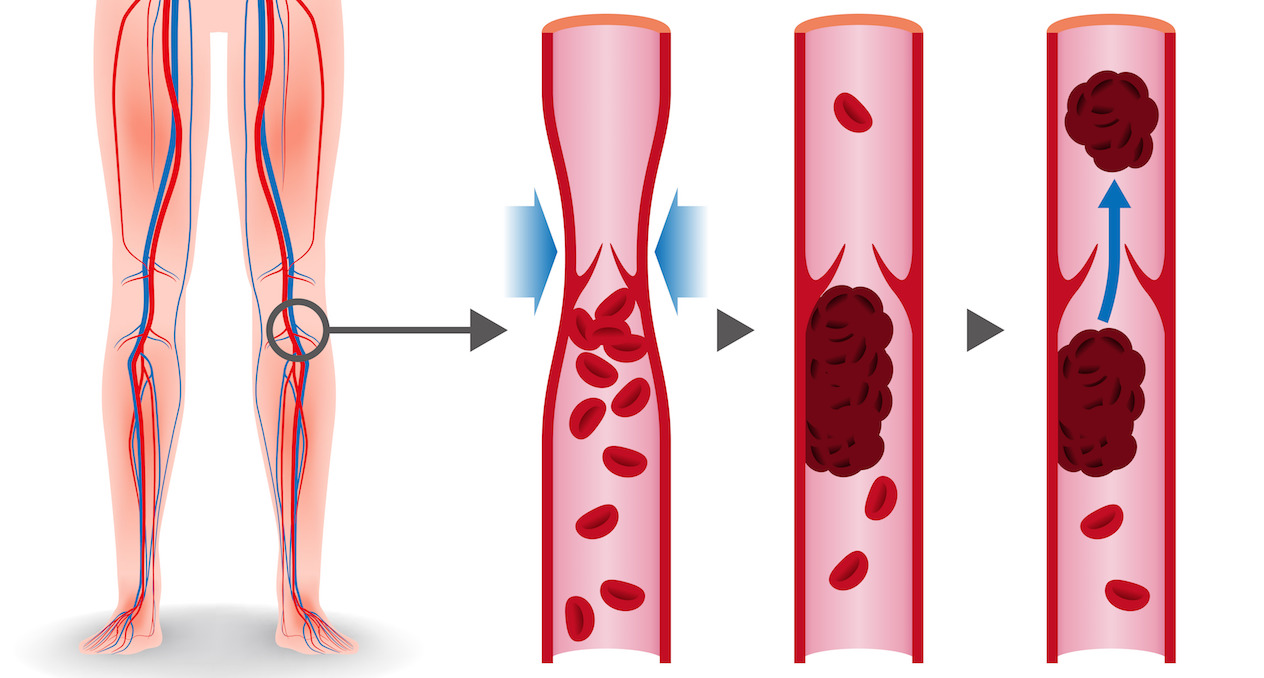Deep Vein Thrombosis (DVT) is a blood clot in a “deep” vein. These are veins that travel deep in the body and are usually surrounded by muscle.
DVT is a serious condition which can lead to pulmonary embolism. This happens when a blood clot in a deep vein breaks off and travels to the lungs – which can be life-threatening. Blood clots in superficial veins (which are close to the skin) don’t travel to the lungs, so there’s no risk of pulmonary embolism.
Where Does DVT Happen?
Deep Vein Thrombosis usually occurs in the legs and pelvis, but it can happen in any deep vein.
What are the Symptoms?
The body breaks down small clots naturally, but if you have a large clot which can’t be broken down then you might have these symptoms:
- Swelling, warmth in the swollen area
- Pain or tenderness (you might only feel this when walking or standing)
- Redness of the skin
How Do I Know If I Have DVT?
If you have any of the symptoms we’ve mentioned, then you could be at risk. Call your doctor or head to your nearest hospital. You might need to have an ultrasound to find the blood clot, or a procedure called intravenous venography. This is when “dye” is injected into the vein to make any blockages visible on an x-ray.
How is DVT Treated?
There are 4 steps to treating DVT, and your doctor will focus on:
- Preventing the blood clot from getting any bigger
- Stopping the blood clot from travelling to the lungs
- Preventing post-thrombotic syndrome: this condition can cause pain, sores, and swelling in the affected leg
- Prevent blood clots from returning
Medication, exercise, pressure stockings, and keeping the leg elevated are all used to help treat DVT.

